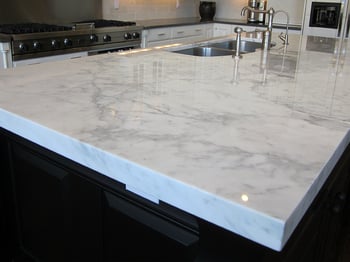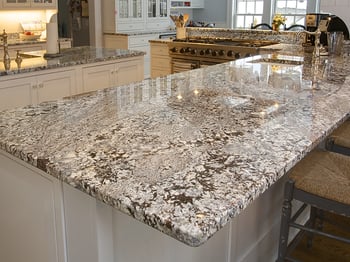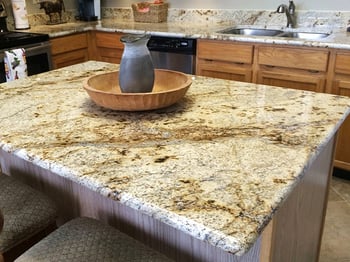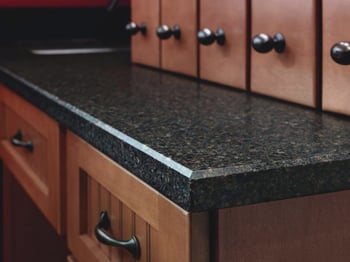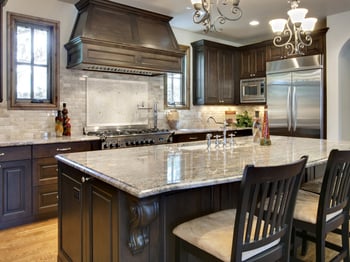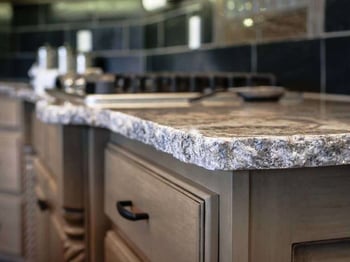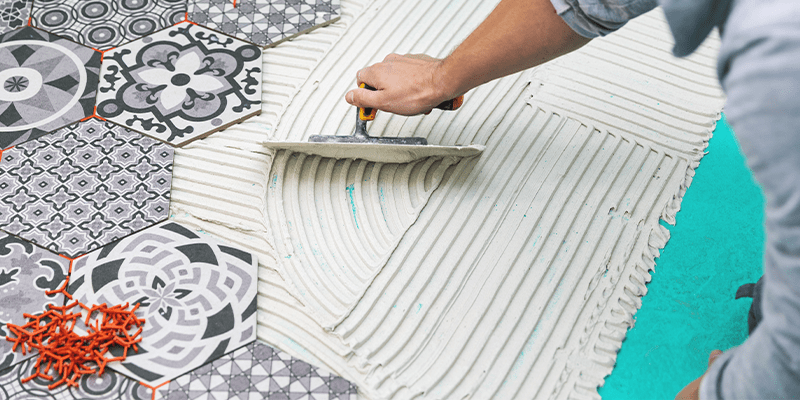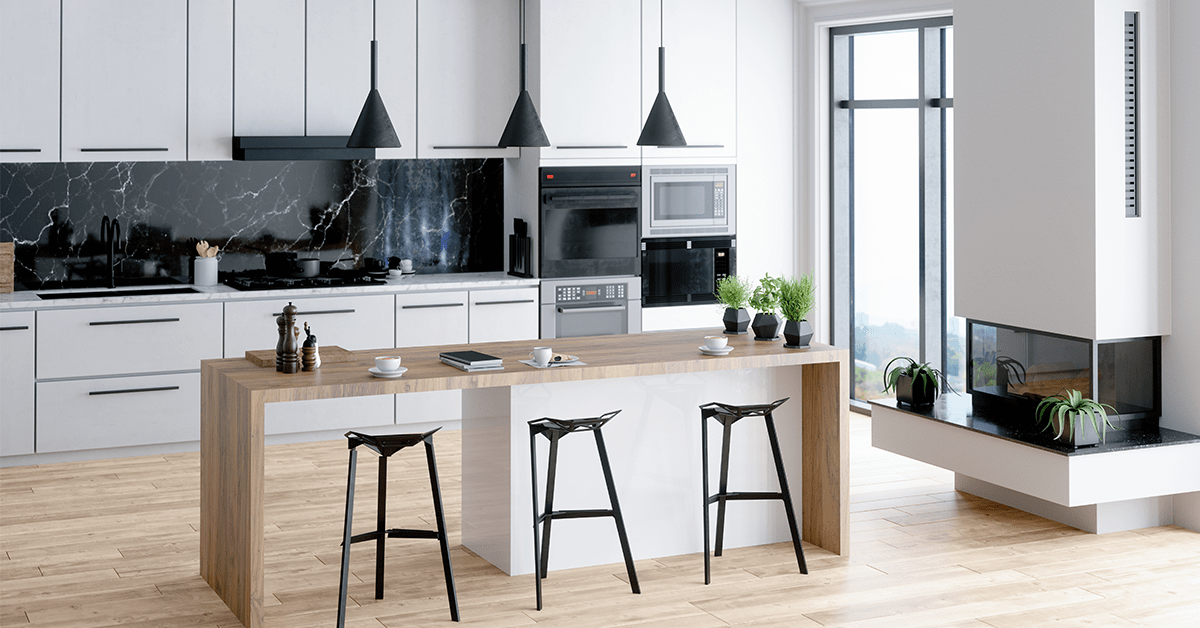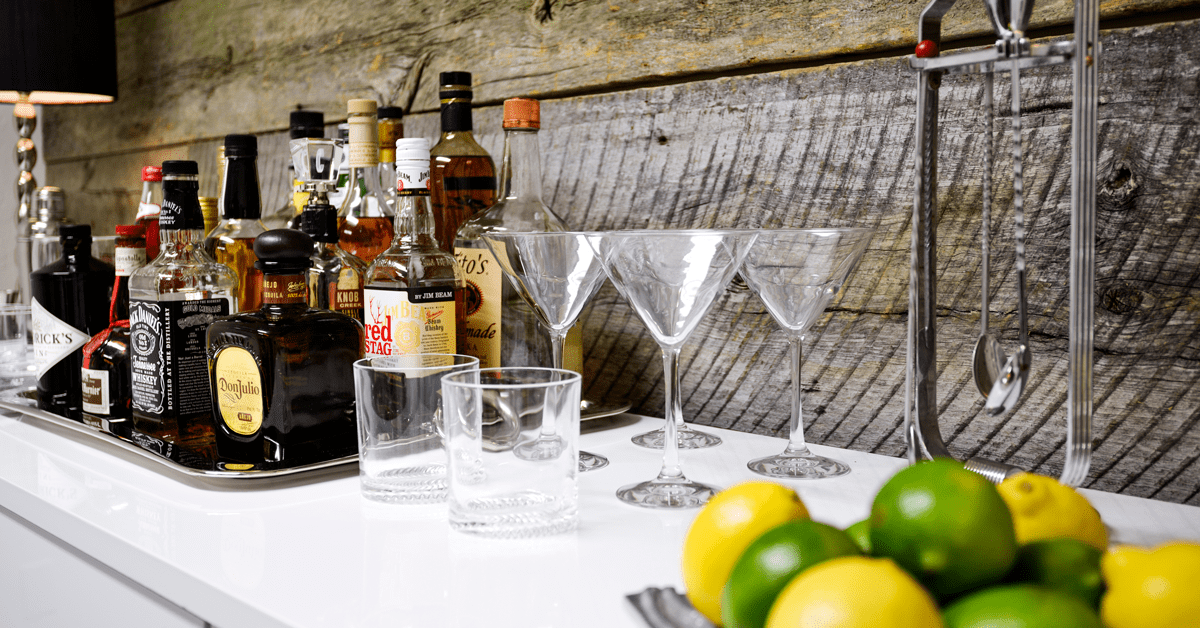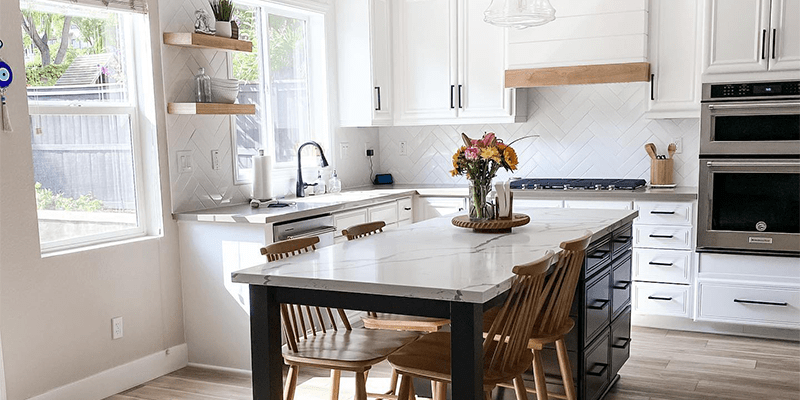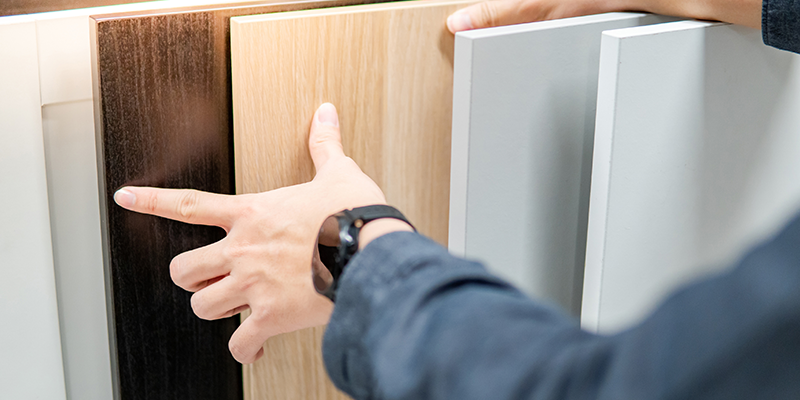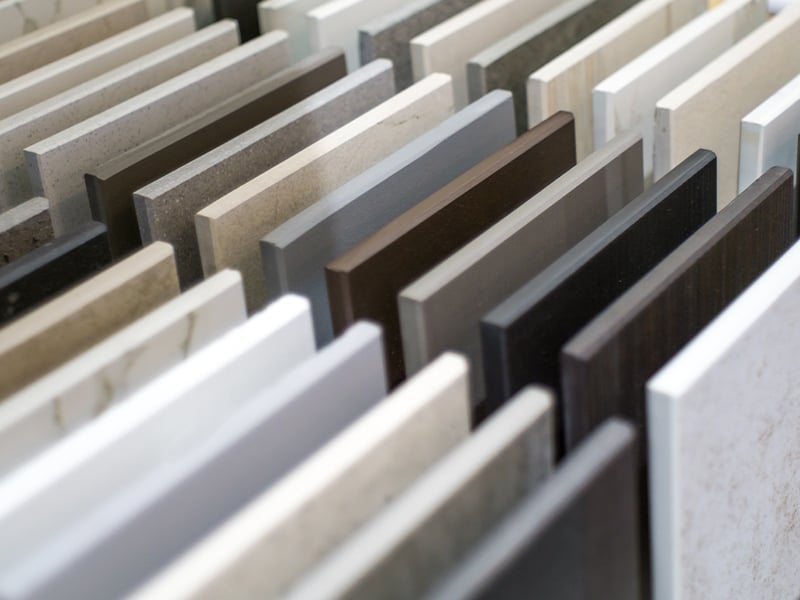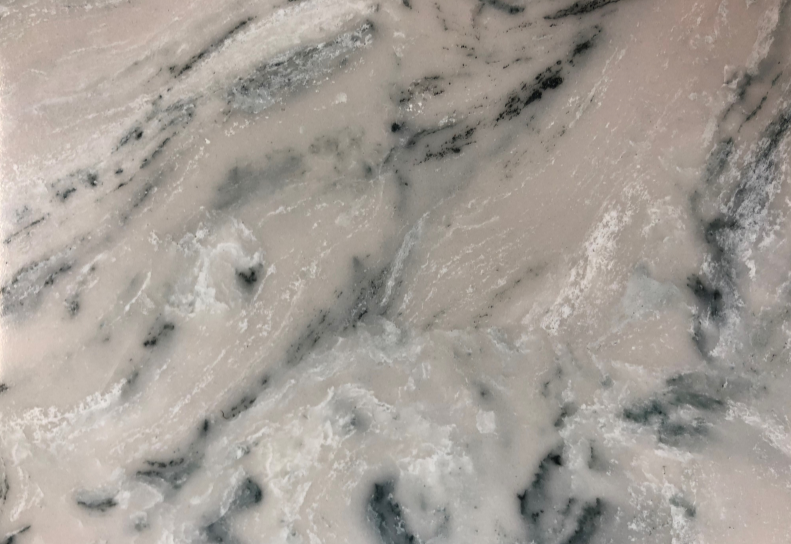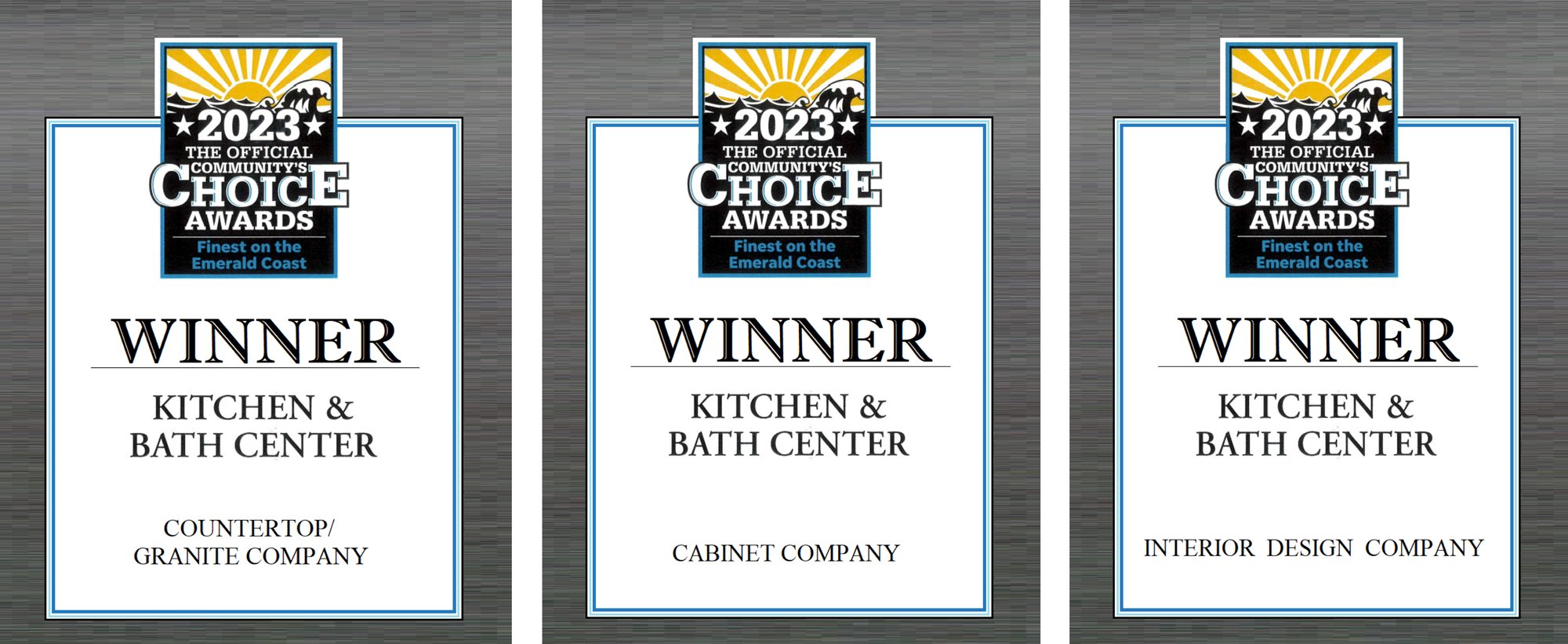You've looked at dozens of samples for your new countertops. After deliberating on all the colors, textures, and maintenance involved, you've finally settled on the material.
While picking the right material for your countertop is a task all its own, the edge is one of the most prominent features. The countertop edge is what you, your friends, and your family will gather around, sit next to, lean against, and bump into every time you’re in the kitchen.
Since granite and quartz are the two most popular materials for kitchen countertops today, let’s focus on the edge treatments available for these.
Flat, polished edge
A flat, polished edge or eased edge is a common choice for kitchen countertops. It is clean, simple, and modern-looking and the profile fits well with shaker-style cabinets. The edge has a square, crisp-look, but it isn’t sharp. The sides and corners are ever-so-slightly-smoothed to protect you from injury and the countertop from chipping.
Rounded edge
Most countertop manufacturers offer a few variations on the radius you can add to the flat, polished edge (such as a 3/8” or 5/8” round edge). These options add more roundness to the countertop edges for an even softer look, while remaining clean and simple. More roundness actually makes the countertop a little bit stronger, especially if something heavy, like a cast-iron pot, is knocked against it.
Bullnose edge
The bullnose edge is the roundest. This countertop edge is fully rounded from top to bottom and is popular in families with young children. It tends to make the countertop look a little thinner, so some homeowners choose a half bullnose, which only is round on the top.
Beveled edge
A beveled edge has an angle that is less than 90 degrees. Most beveled edges are 45 degrees. This angular edge is a decorative touch that some homeowners choose to enhance a contemporary or traditional kitchen countertop.
Ogee edge
An ogee edge is often found in more traditional kitchen designs. This edge-style has a gentle S-curve to it, giving countertops an intricate look. While the ogee edge is slightly harder to keep clean since crumbs and dust can gather in the grooves, its flowing, elegant appearance makes up for it.
Chiseled edge
Interested in a much more rustic, natural looking countertop? This edge has natural stone exposed on the side, giving the slab of countertop the appearance that it has just been chiseled out of the ground.
A Myriad of Options
All manufacturers and fabricators have slightly different names for similar edge styles. This list is just a handful of some of the most popular options for countertops. You can also get creative with your edge profiles. Most fabricators do many custom options. Just remember the more detailed the edge, the higher the cost!
If you plan on selling your home soon, consider a style that will appeal to the broadest number of homebuyers. In our experience, the flat, polished edge or rounded edge is what most homeowners choose.
If you're not sure which option would be best for your home, come by one of our five showrooms. The team at Kitchen & Bath Center is happy to answer any questions.
DREAM IT. DESIGN IT. LIVE IT. | Kitchen & Bath Center

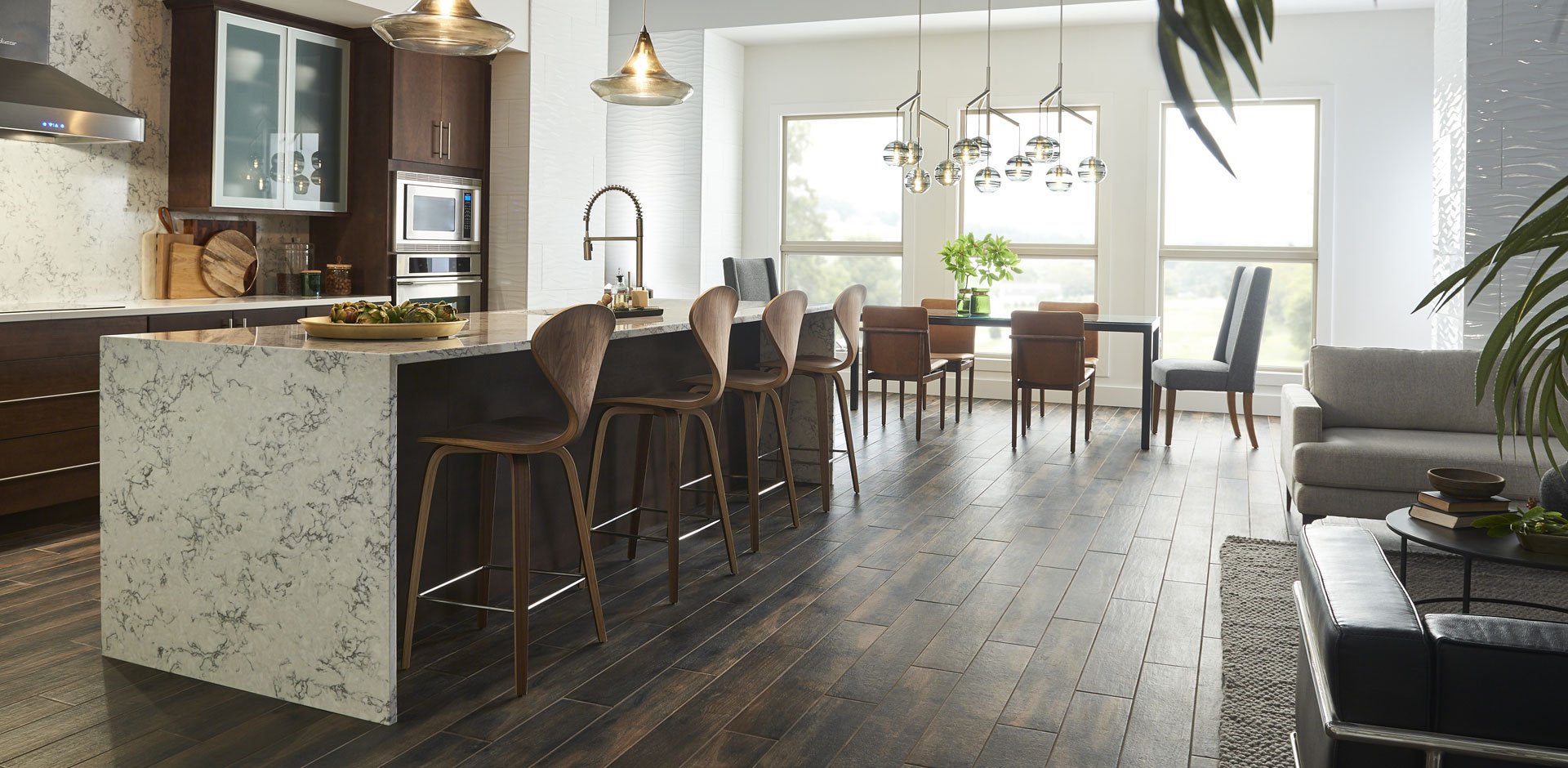
.png)
